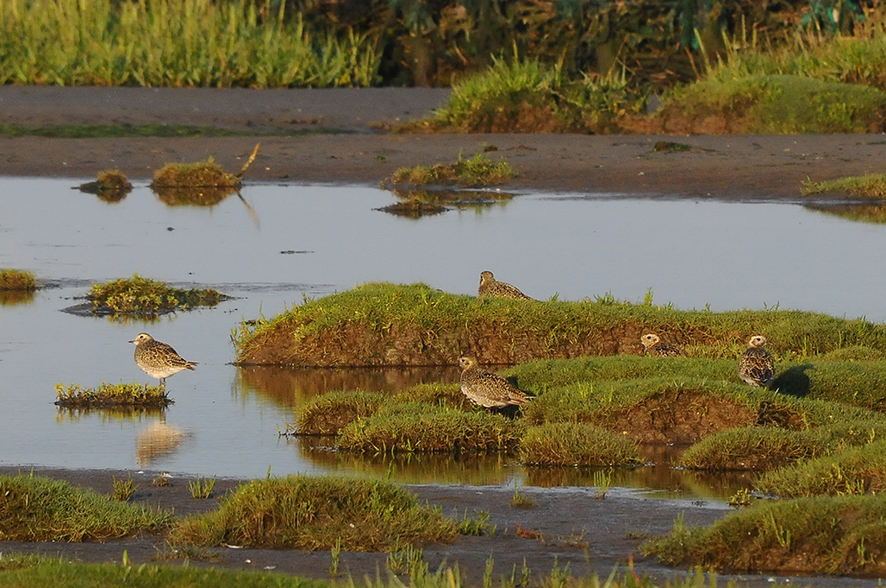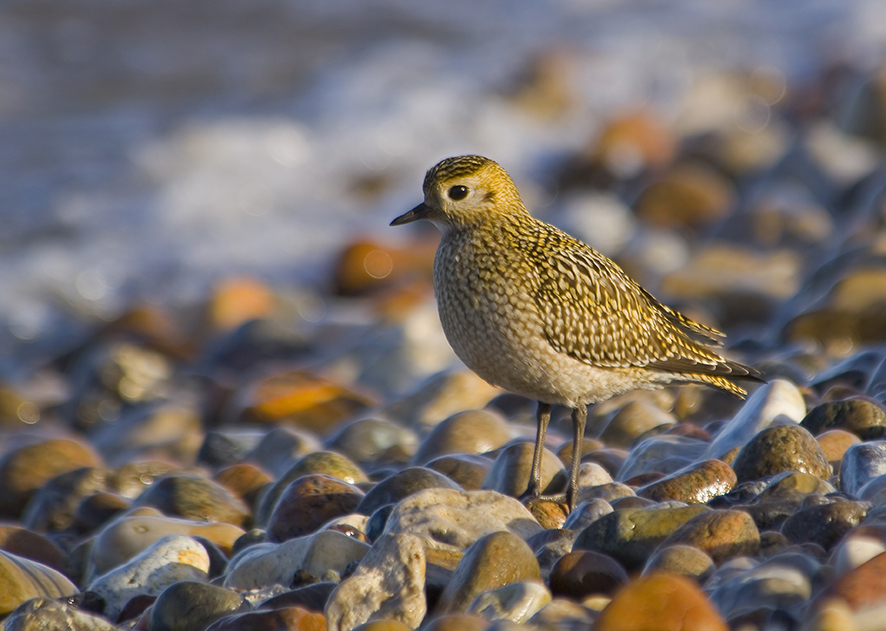Golden plover
- The golden plover, the heath and hopelessness
In 1800, the majority of Jutland was covered by heath. The term ”The dark Jutland” most probably was derived from this period when the vast mass of dark brown heather dominated the landscape. It was also during this period that the golden plover was in its heyday. It is a characteristic bird of the desolate and treeless landscape, where it thrives best in areas with low heather vegetation. The sound of the golden plover’s monotonous extended whistle ”plu-i-vii” also became a known sound on the heath. Great Danish poets like Jeppe Aakær, Johannes V. Jensen, N.F.S. Grundtvig and St. St. Blicher have all described the golden plover’s melancholy whistle in texts and poems. At the time, the heath was a wild, desolate, poor and lonely place, which is particularly well expressed in a text about the golden plover by S.H.A. Rambusch.The cultivation of the heath, which began in the late 1800s, apparently caused the immediate disappearance of the golden plover, the heath as well as the hopelessness of Danish poetry. Today the golden plover has almost disappeared as a Danish breeding bird, with the most recently registered breeding was by a single pair on the heath at Borris Hede and a pair at Hansted Reserve in Thy.

Migrating golden plovers in lapwing flocks
As a migratory bird, you can encounter the golden plover in large flocks on pasture and ploughed fields where it likes be seen along with lapwings. A large proportion of Europe's golden plover population migrates through Jutland on their travel to wintering areas in West and South Europe. Particularly in the Wadden Sea area, the golden plover can frequently be seen as a migratory bird, and over 50,000 birds can sometimes be counted here.
Facts
The golden plover is a beautiful wading bird, which has a black underside and face in the breeding season. The back is mottled in golden brown colours. It can be distinguished from the closely related grey plover, which also has a black underside, but has a black and white speckled upperside. The golden plover is 27 cm long and has a wingspan of 67-76 cm. It feeds on insects, worms, snails and berries. The golden plover breeds in Europe on Island, in Britain, Scandinavia and the Baltic countries.


